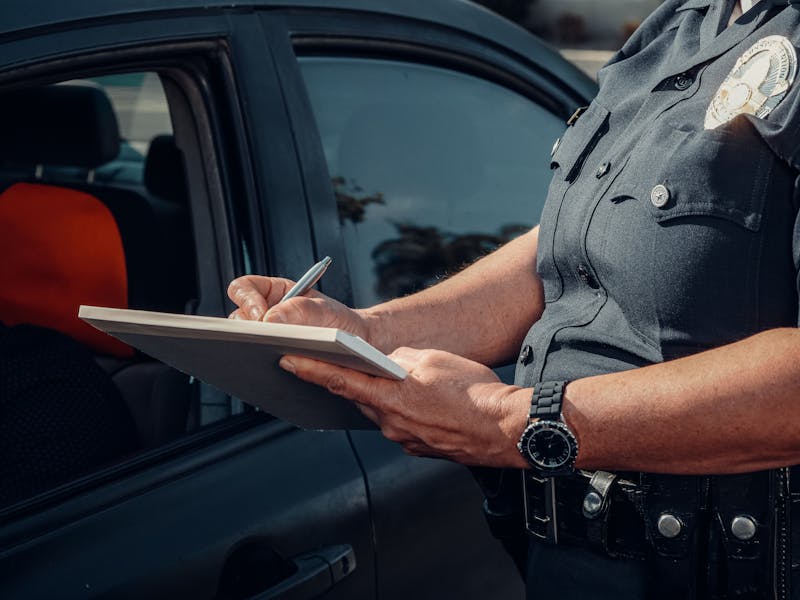8 Types of Evidence to Collect After a Car Accident in San Diego

After a car accident in San Diego, collecting the right evidence is crucial for proving what happened and recovering full compensation. Insurance companies will look for any gaps or lack of documentation as an excuse to minimize or deny valid claims.
As experienced car accident lawyers, we know the types of evidence that carry weight during negotiations or litigation.
In this guide, we’ll cover the key pieces of evidence you need to obtain after any reportable accident in San Diego to build a strong case and protect your rights:
1. Contact Information for All Parties Involved
One of the first and most critical steps after a car accident is obtaining comprehensive contact information for all parties involved, including drivers, passengers, and witnesses.
Gather names, phone numbers, addresses, driver’s license numbers, license plate numbers, and insurance information from everyone at the scene of the accident.
Your car accident lawyer will need this data to follow up when gathering additional proof, testimonies, or statements necessary to build a strong injury claim.
Witnesses, in particular, can provide objective third-party perspectives that corroborate or contradict the claims of the drivers involved. Pay attention to this crucial evidence-collecting step.
2. Photographs and Videos
Visual evidence is compelling in car accident lawsuits, providing tangible documentation to substantiate your claims and counter any contradictory arguments from the other party.
Take pictures and as many videos as possible at the accident scene, capturing the positions of the vehicles, any skid marks or debris on the road, traffic signals, and the overall road conditions. These visual records establish how the accident unfolded and who was at fault.
In some cases, bystanders may also have captured footage of the accident on their smartphones, which can be invaluable evidence if obtained.
3. Witness Statements
When bystanders or other individuals witnessed the car accident, you should obtain their names, contact information, and a summary of what they saw. Witness testimonies can serve as decisive evidence, especially when they corroborate your version of events or contradict the defenses made by the other party.
Individuals not directly involved in the accident can also give an objective perspective of what happened and help establish facts that judges or jurors may consider later.
Additionally, witnesses may have observed details that you missed due to the chaotic nature of the accident, such as the other driver’s behavior before the collision or the condition of the road.
4. Road Conditions and Hazards
Documenting as many details as possible about the accident scene environment builds more substantial claims. This task includes noting the weather conditions during the accident, such as heavy rain or snow, which could have impacted visibility or road conditions.
Documenting and reporting any road hazards that may have contributed to the accident, such as construction zones, potholes, or debris, is also necessary. Additionally, note any traffic patterns, confusing traffic signals, or road designs that may have obscured sight lines or caused confusion.
Noting road conditions and hazards gives your attorney valuable information that can help create a more precise “causation” picture.
5. Vehicle Damage Documentation
Carefully document all damage to your vehicle, including dents, scratches, broken glass, and any other impact signs. Take photographs from multiple angles and note the specific areas of damage.
Property damage evidence is also necessary when filing an insurance claim because it establishes the out-of-pocket costs needed to make the vehicle whole again.
6. Medical Records and Bills
After sustaining injuries in a car accident, you must keep detailed records of all medical treatment you receive.
This documentation includes doctor’s notes, hospital reports, medical bills, and other healthcare records related to your recovery. This crucial evidence establishes the injuries you sustained and the associated expenses, helping to quantify harm and assess case value.
Medical records also establish the severity of your injuries, the treatment required, and the ongoing impact on your health and well-being.
Furthermore, medical bills and receipts help accountants and economists calculate the future costs of your injuries, like outpatient medical expenses, lost future wages, and other damages.
7. Lost Wage Documentation
If you missed work due to the accident, document your lost wages through pay stubs or a letter from your employer.
Wage loss evidence also substances your future general damages (intangible harm) in a personal injury lawsuit or insurance claim.
8. Personal Records and Notes
In addition to medical records, it’s a good idea to maintain a detailed personal journal or “pain diary” about your injuries and the impact the accident has had on your daily life. Be sure to label it “for attorneys” to protect it from being discoverable by the defense.
These personal accounts can provide valuable evidence of the non-economic damages you’ve suffered, like pain and suffering, emotional distress, or loss of enjoyment of life.
While medical records and bills can quantify your injuries’ physical and financial costs, personal accounts can help paint a complete picture of how the accident has affected your life.
Contact a Southern California Injury Lawyer for a Case Evaluation
If you need legal assistance or help gathering evidence after a car accident, contact the Pasternack Injury Law Group in Southern California.
Our experienced personal injury attorneys help car accident victims like you collect the necessary proof to build a strong case and fight for well-deserved compensation.
Don’t hesitate to reach out for a free consultation and more information on how we can help you tackle the aftermath of a collision.
